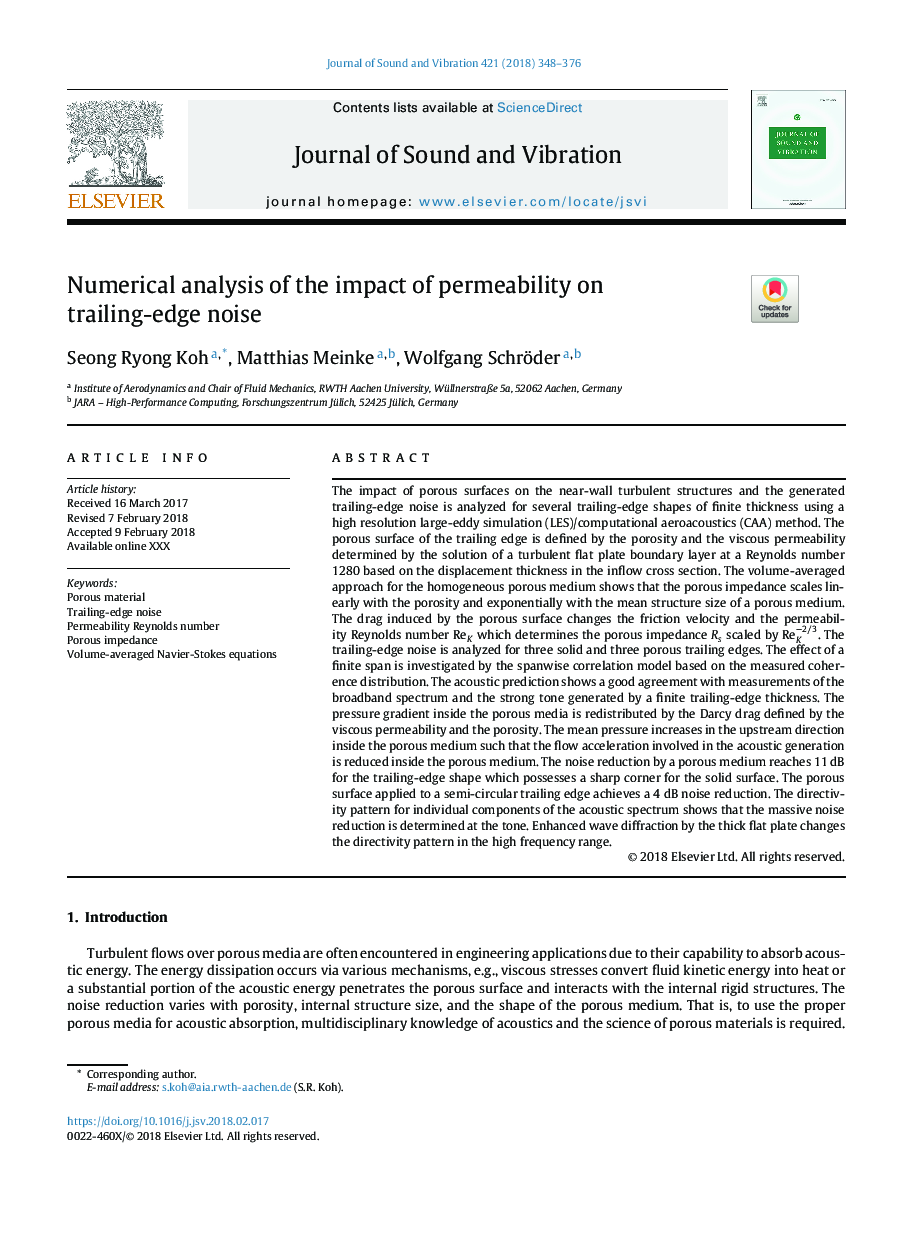| کد مقاله | کد نشریه | سال انتشار | مقاله انگلیسی | نسخه تمام متن |
|---|---|---|---|---|
| 6753410 | 1430812 | 2018 | 29 صفحه PDF | دانلود رایگان |
عنوان انگلیسی مقاله ISI
Numerical analysis of the impact of permeability on trailing-edge noise
ترجمه فارسی عنوان
تجزیه و تحلیل عددی از تاثیر نفوذپذیری در سر و صدا سر و صدا
دانلود مقاله + سفارش ترجمه
دانلود مقاله ISI انگلیسی
رایگان برای ایرانیان
موضوعات مرتبط
مهندسی و علوم پایه
سایر رشته های مهندسی
مهندسی عمران و سازه
چکیده انگلیسی
The impact of porous surfaces on the near-wall turbulent structures and the generated trailing-edge noise is analyzed for several trailing-edge shapes of finite thickness using a high resolution large-eddy simulation (LES)/computational aeroacoustics (CAA) method. The porous surface of the trailing edge is defined by the porosity and the viscous permeability determined by the solution of a turbulent flat plate boundary layer at a Reynolds number 1280 based on the displacement thickness in the inflow cross section. The volume-averaged approach for the homogeneous porous medium shows that the porous impedance scales linearly with the porosity and exponentially with the mean structure size of a porous medium. The drag induced by the porous surface changes the friction velocity and the permeability Reynolds number ReK which determines the porous impedance Rs scaled by ReKâ2/3. The trailing-edge noise is analyzed for three solid and three porous trailing edges. The effect of a finite span is investigated by the spanwise correlation model based on the measured coherence distribution. The acoustic prediction shows a good agreement with measurements of the broadband spectrum and the strong tone generated by a finite trailing-edge thickness. The pressure gradient inside the porous media is redistributed by the Darcy drag defined by the viscous permeability and the porosity. The mean pressure increases in the upstream direction inside the porous medium such that the flow acceleration involved in the acoustic generation is reduced inside the porous medium. The noise reduction by a porous medium reaches 11â¯dB for the trailing-edge shape which possesses a sharp corner for the solid surface. The porous surface applied to a semi-circular trailing edge achieves a 4â¯dB noise reduction. The directivity pattern for individual components of the acoustic spectrum shows that the massive noise reduction is determined at the tone. Enhanced wave diffraction by the thick flat plate changes the directivity pattern in the high frequency range.
ناشر
Database: Elsevier - ScienceDirect (ساینس دایرکت)
Journal: Journal of Sound and Vibration - Volume 421, 12 May 2018, Pages 348-376
Journal: Journal of Sound and Vibration - Volume 421, 12 May 2018, Pages 348-376
نویسندگان
Seong Ryong Koh, Matthias Meinke, Wolfgang Schröder,
